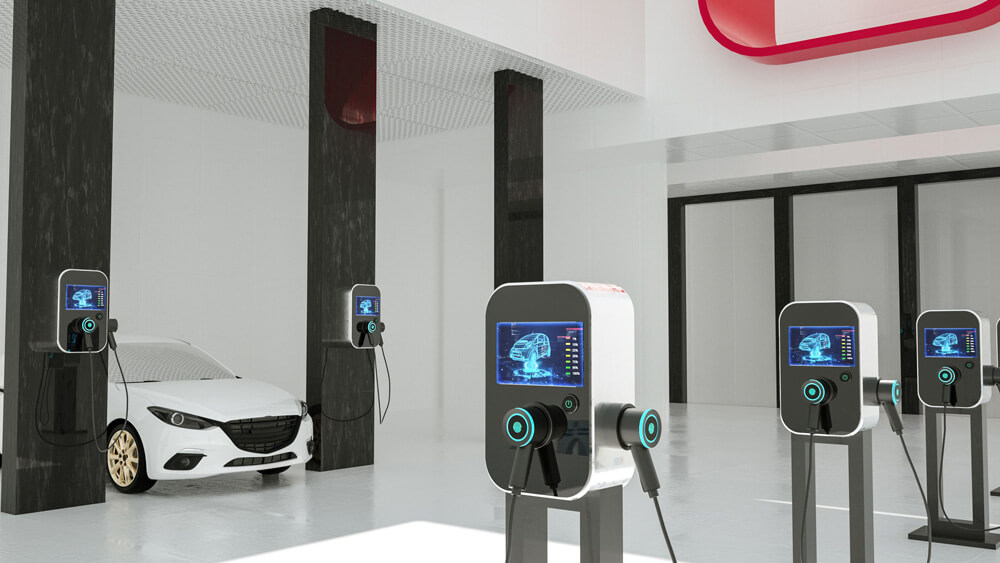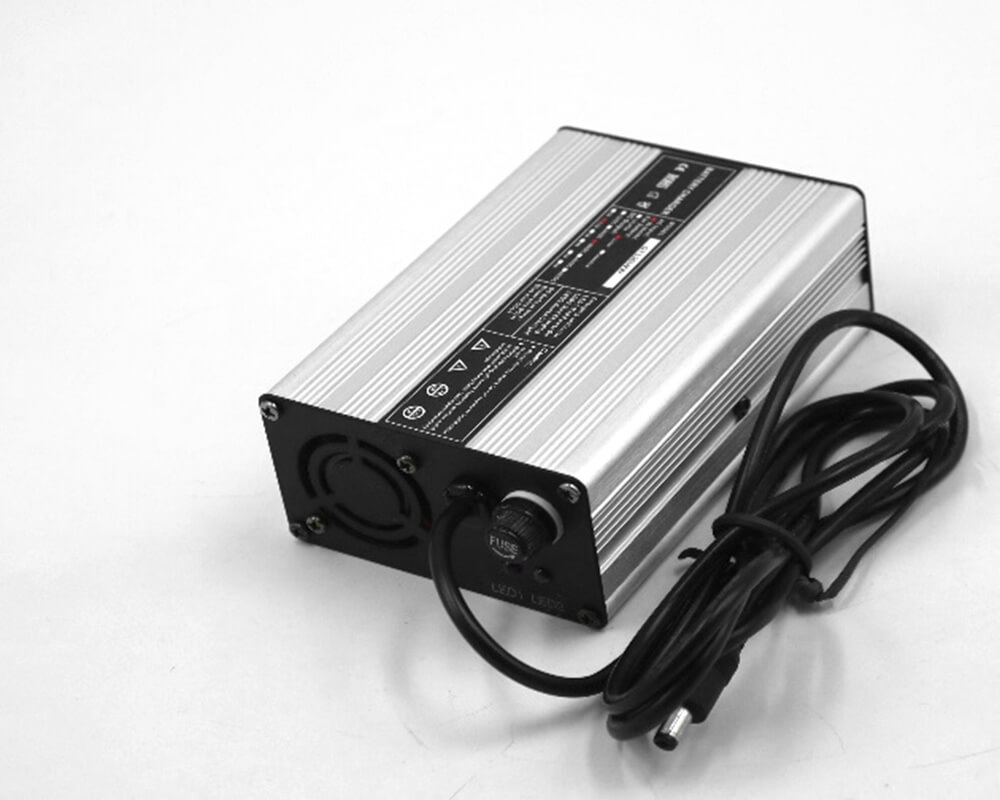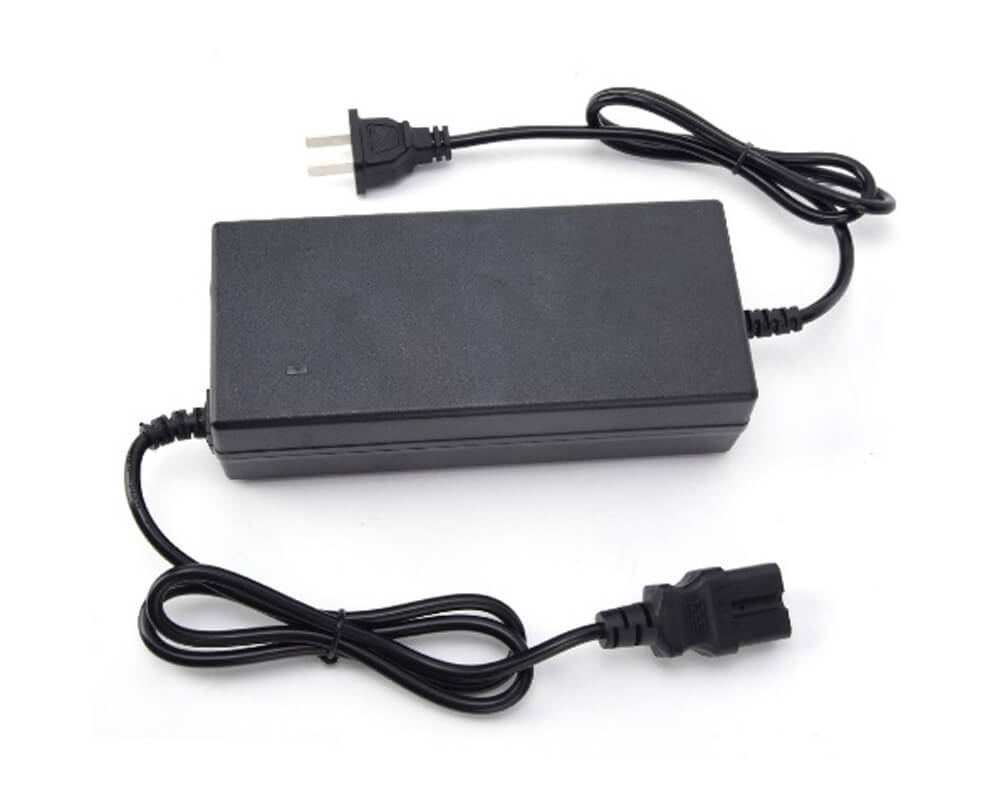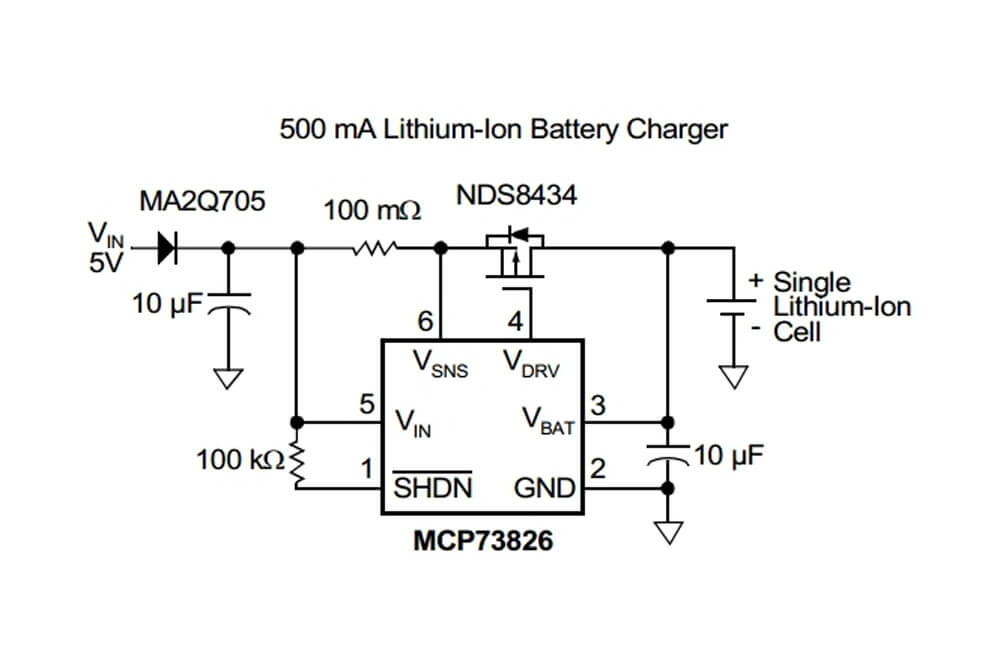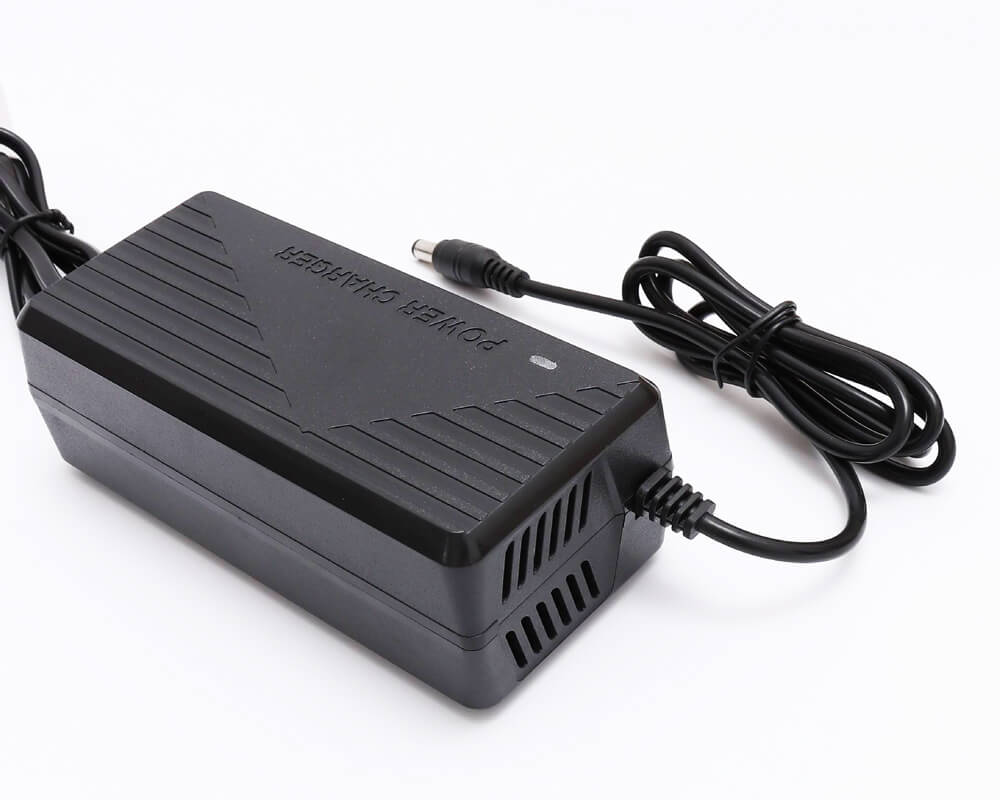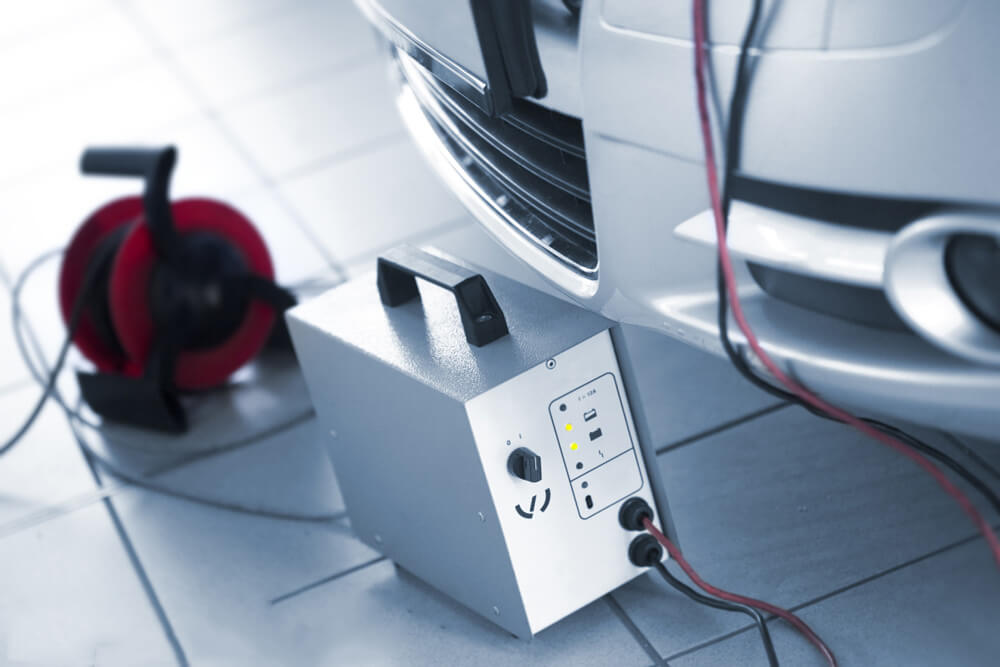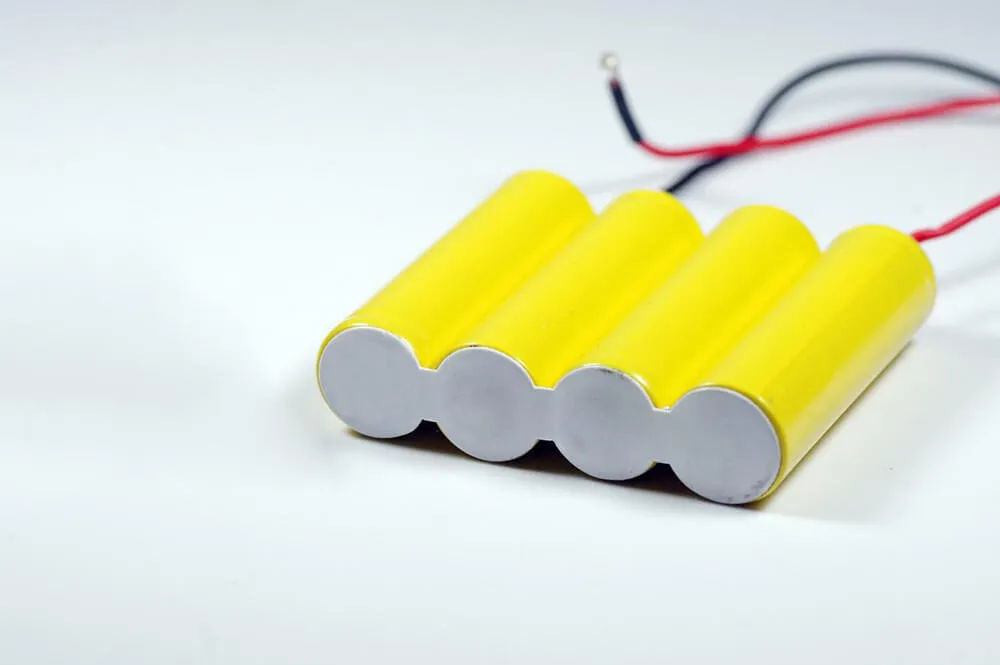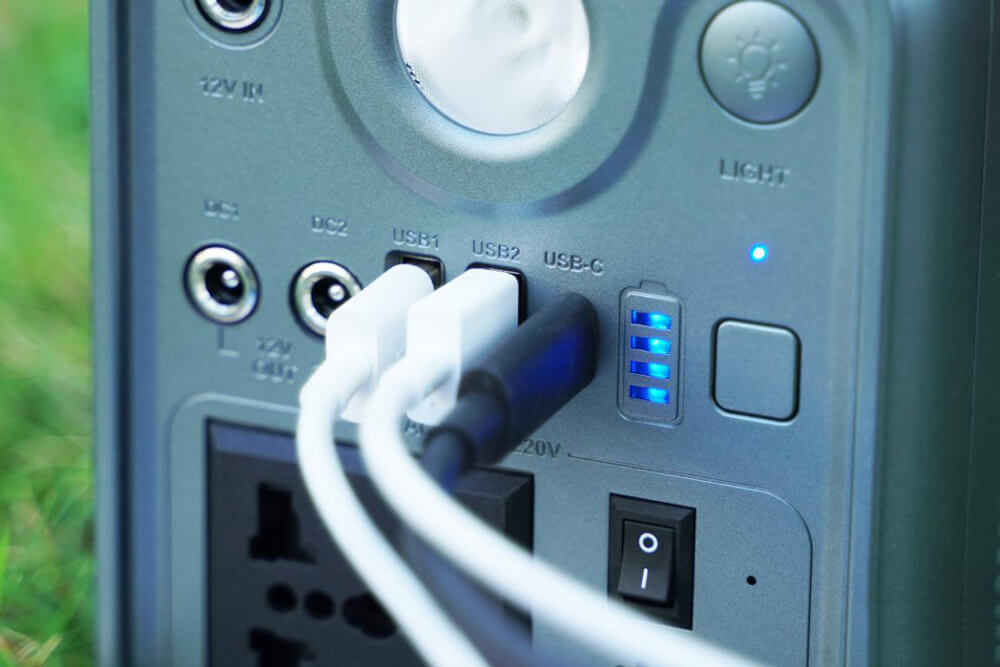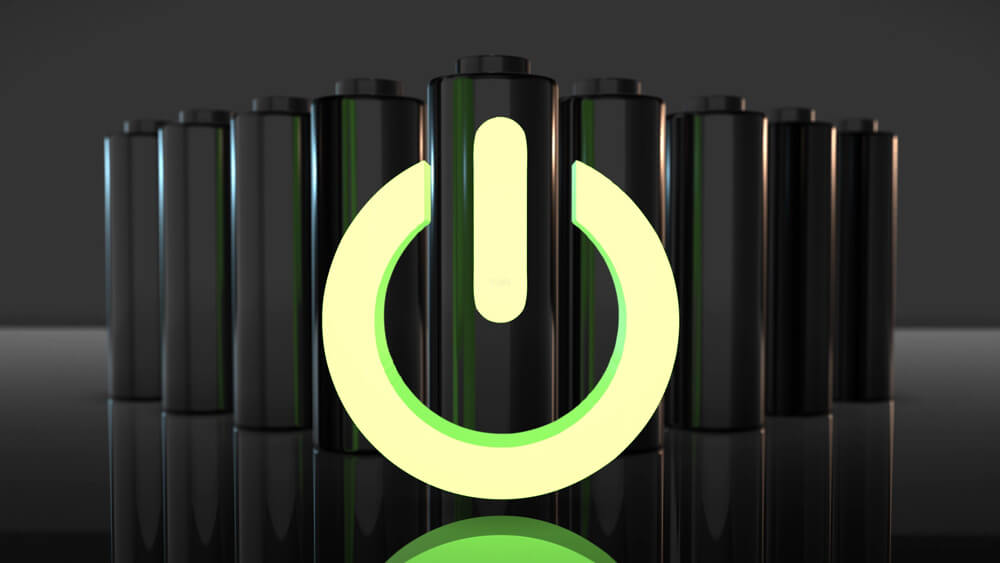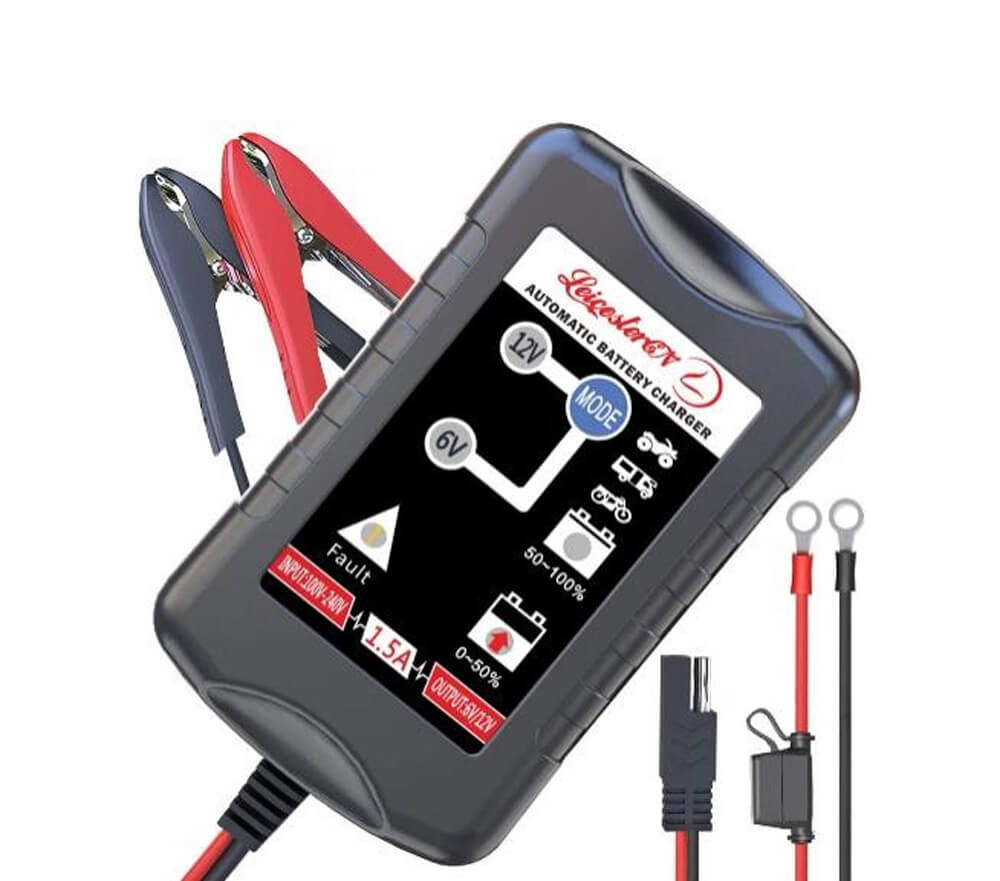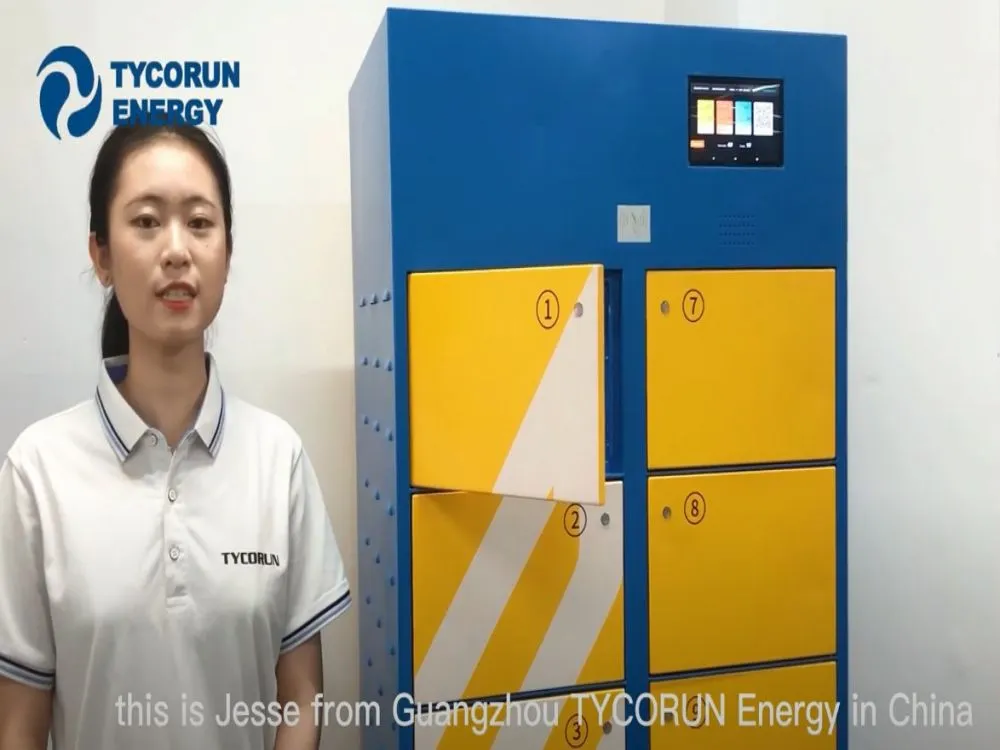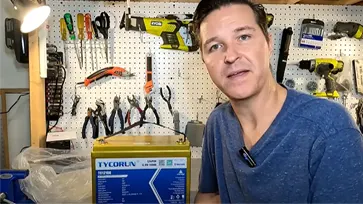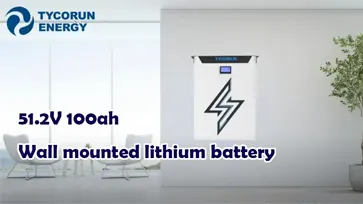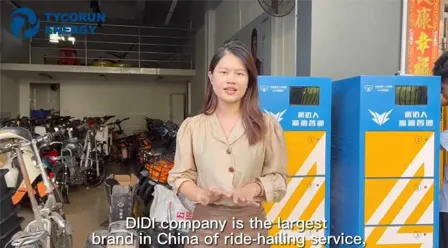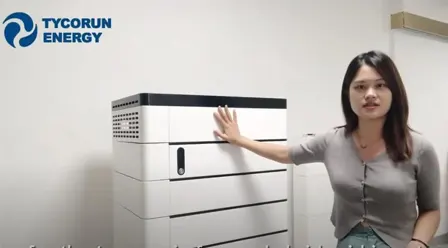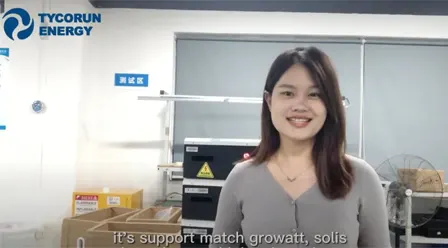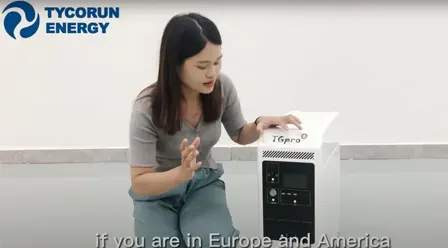Best Guide For Choosing a Perfect Lithium Battery Charger in 2022
Home » Best Guide For Choosing a Perfect Lithium Battery Charger
Lithium Battery Charger factory
14-year professional lithium ion battery manufacturers, 10-year warranty on battery packs, using the best BMS protection board, protecting the lithium battery pack from overcharge, overdischarge, overcurrent, short circuit, etc, with excellent self-discharge rate. Configurable Bluetooth, can be connected in series and parallel. The heating function and other special functions can also be customized. Enough stock for the 10 series of 12v lithium ion battery for 12v battery charger. Can be shipped within 3 days.
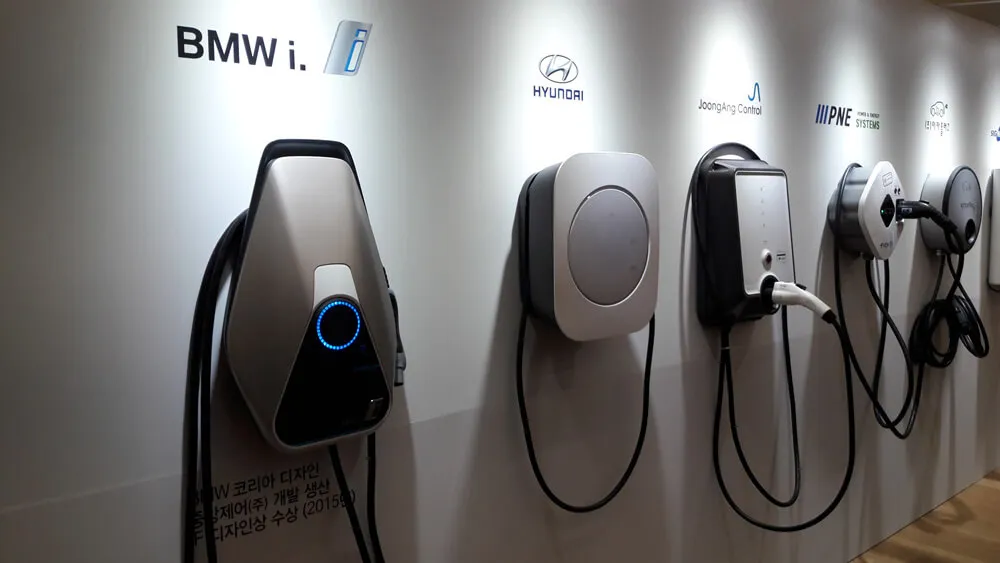
Best Guide For Choosing a Perfect Lithium Battery Charger in 2022
People often find it tiring and complicated whether to choose a good charger or not. They find it uncomfortable while actual getting up to buy a reliable lithium ion charger. This sounds uneasy so the things become a little easier when you already have knowledge before buying a certain product.
It something that we can’t neglect. It’s important to choose the right charger for your battery. The choice of a right charger will provide you a safe and efficient function. In this modern era, the lithium products are so much demanding. They provide you ease such as a lithium battery charger where it provides you efficiency along with your tasks.
In this lithium ion battery choosing guide. We will explain every possible question that can come into a reader’s mind for you to select the best charger. All basic aspects are briefly explained, these few factors go in while choosing a charger, each of them are described below:
- What is a lithium battery charger?
- Which points should be followed while choosing a lithium battery charger?
- What type of chargers are available in the market?
- Is it safe to use a lithium battery charger?
- What is the difference between lithium and lead acid battery chargers?
- At which rate should I use lithium battery charger?
- What are the charging methods for lithium-ion batteries?
- How to use lithium battery charger to increase the longevity of the battery?
- Can I use solar energy as an alternative to the Li-ion charger?
- What is the basic difference between a slow and ultra-fast charger?
- What is 3-step charging technology?
- Can I use a lithium battery charger on an AGM battery?
- Are lithium battery chargers trickle in nature?
1.What is a lithium ion battery charger?
Preface of a lithium-ion battery
An accumulator is basically electrically chemical in nature. This product changes the chemical energy into electrical energy. Any material with lithium in it can be used as the basis of these lithium-ion batteries.
Lithium battery charger
Lithium battery charger can be termed as a device that limits the voltage. It usually comes with the absence of trickle, high voltage tolerance, and float charge at full charge.
These charges are based on a non-changing voltage which can also be termed as a constant charge current algorithm.
Essential Function of charger
The charger mainly limits the current to a level that was already set until it reaches an early-set voltage level. When the battery is fully charged, the current begins to drop.
2.Which points should be followed while choosing a lithium battery charger?
So when you want to choose the best battery charger, these are the terms that should be prioritized. Because a best battery charger will put your battery into an excellent, efficient state.
The factors are listed below:
Chemistry of battery
This factor is a concern taking. Chargers are designed according to the chemistry of the battery. For an accurate charging voltage, the correct type of charger is required.
Charging current
Charging current is another thing to be considered. As some of the lithium-ion cells shouldn’t be set above 1C so, in that condition, you are advised to keep it below 0.5 C. Simply, we can conclude that C is the capacity of the battery.
BMS
At last, you need to keep an eye on the BMS only if you have one. BMS is rated. Differently, some of them are placed for 5A charging. However, it can vary if you have a high-power BMS.
Charging Voltage
Here comes another concern the charging voltage. If you are using a battery with lithium-ion cells, that is required to be charged to 4.2V per cell. This means you need a lithium ion charger with an output voltage (4.2V x the number of cells (in series) in your battery).
3.What type of chargers are available in the market?
Well, many choices are present out there in this modern age of batteries. A few essential qualities provide the basis for the rest of them. The chief options are listed below:
Aluminum case chargers
They are also categorized as Step up chargers. There are many other options out there, but they have good quality compared to plastic ones. They can tolerate high power levels. They have a cooling fan which is even adjustable most of the time.
Plastic charger
Usually, most plastic chargers are useless; however, some are good. But the main hurdle arises when one has to distinguish between the two as both look exactly alike.
Their main merit is that they are easily accessible and cheaper, which means they won’t burden your pocket. The demerits indicate that they have low power.
They will not carry a fan along with them. Anyhow, they provide a good backup charger.
Balance chargers
Balance chargers are further categorized based on their quality. These chargers are mainly used in cars and drones (RC world). You need to conclude what exactly you are doing with your balance chargers.
Cons: They don’t have BMS installed, which clearly tells you no protection.
Programmable chargers
Chargers such as “Cycle satiator” come in this type. They are high-quality chargers. They have multiple features through which you’ll be able to customize profiles. However, they will put a little more burden on your pocket rather than other chargers.
Lithium battery chargers are easily available in these charger types.
4.Is it safe to use a lithium-ion battery charger?
The most frequently asked question is whether it is safe to use a lithium battery charger while charging a lithium-ion battery or not? The answer depends upon the battery type and capacity of the charge.
As lithium-ion batteries have various varieties in the market, they can be made of nickel, cobalt, manganese, which typically charge to 4.20V/cell. A high capacity Li-ion battery may go to 4.30V/cell and more elevated. The voltage is in direct relation to the capacity of the storage.
Lithium-ion batteries are fully charged when the current drops to a previously set level. Some chargers even have shown a topping charge when the voltage gets dropped.
Average rate:
Energy cell is charged between 0.5C to 1C, where the total charge time is about 2 to 3 hours.
Risk:
Some lithium-ion batteries may experience a temperature rise of about 5 degrees Celsius when the charge is fully reached.
Overcharge of battery:
Lithium batteries cannot absorb extra charge mainly above the expected value; the amount must be cut off.
However, if you don’t do that, the constantly passing current would result in the plating of metallic lithium. For more safety purposes, keep the lithium-ion battery at cut-off when its fully charged.
5.What is the difference between lithium and lead acid battery chargers?
This question is mainly asked by every other person in the battery market. Let’s enclose this confusion that can I charge different type of batteries with different type of chargers?
According to the battery chemistry, lithium-ion batteries are far different from lead-acid ones, and not all the chargers come in the same standard.The following things should be considered before charging a battery with a different charger.
Lithium-ion battery mainly has four cells. The voltage is kept at 3.2 volts for each cell while the resting voltage of 12.8 volts is present;Lead-acid battery is composed of six cells in number. The cells are kept at the voltage of 2 volts. The resting voltage is determined as 12 volts.
Can you utilize a lithium charger on a lead-acid battery?
The nature of the lithium battery charger is voltage-limiting which is similar to the lead-acid system. While the chargers are based on CC/CV (constant current/constant voltage) charge algorithm.
The confusion here is, can you use the wrong type of charger or not? Utilizing a lithium charger on a lead-acid battery will obviously supply a consistent voltage to the power source as long as possible.This is a risk as it can drain the cells below their capacity and limit or cease the battery’s life. It will give you a loss in either way.
So the exception occurs if you can change the voltage and other charging limits with great accuracy, then maybe you can avoid these problems. It’s a solution to emergency case. However, the best thing you can do is use a suitable charger.
Lead acid charger on lithium ion battery will cause damage
Well, using a lead-acid battery charger over the lithium-ion is another matter. Obviously it’s different from using a lithium ion battery charger. It will cause the risks of battery damage.
6.At which rate should I use lithium battery charger?
It’s an important consideration. The charging rate is designated by C, which mainly charges current don’t confuse it with the charge voltage. The simple understanding is that if a battery gets charged at 1C, it means It’ll go reach from zero to 100% in just an hour.
For reassurance, ask your battery operator; he’ll guide you whether your battery is capable of a fast-charging or not.
Role of chargers:
Now where the role of chargers comes from? The chargers themselves have categories such as there are some ultra chargers and other fast ones are available too. Anyhow, lithium ion battery chargers are also ultra in nature. The lithium battery charger have availability in both types.
The 10-min charge:
The automotive industry is increasing its demands for ultra-fast charging. The research department is responding by heating the lithium-ion batteries to a specific temperature to see whether they adopt lithium plating or not.
Terminology:
The chosen temperature is now 60 degrees, heating the battery for a specific duration and cooling it to about 24 degrees. This enables the charging of lithium-ion batteries at a C rate of 6C to 80% in just 10 minutes.
7.What are the charging methods for lithium-ion batteries?
Lithium battery charger provides different algorithms for charging. The charging can be displayed in terms of categories.
Trickle charge( pre-charge)
If the charging level of a battery is shallow, then it can get charged at a reduced constant current which is typically around 1/10. In this case, the voltage of the battery increase, and when a threshold is given, the rate of charge is increased to its maximum capacity.
The lithium battery charger can break down this trickling stage into two:
▶ Precharge
▶ Trickle charge
It depends upon the initial voltage conditions of the battery.
Full rate charge
If the voltage is kept high at the initial stage or the battery has charged up to the maximum charge rate is initiated. Then this is regarded as a constant current charging stage where the battery’s voltage rises slowly.
Taper charge
This occurs when the battery voltage has risen to the maximum charge voltage. This gives rise to the tape charge. In this stage, the charging voltage is kept constant.
This can be neglected because the lithium-ion batteries can fail if they’re allowed to charge at high voltage rather than the maximum voltage. If this charging value is kept constant, the charging current will slowly cease.
Final termination
When the current is even below enough value, the charger disconnects from the battery. The typical values are 1/10 or sometimes 1/20 of the total rate.
The noticeable thing is that not floating charge lithium-ion batteries can affect the performance and reliability of the storm.
8.How to use lithium battery charger to increase the longevity of the battery?
Regularly, the lithium-ion battery gives you about 2000-5000 charging cycles as rated by the research departments. After this ideal situation, the battery capacity will start dropping at the initial stage of 20%.
Longitivety of charging
How often should you use your lithium battery charger? That’s the question. Will excessive use reduce the battery’s life or not? In short, the more you top your battery up, the better it is. To cease the degradation process, top up the battery for every 10% drop. Don’t forget to keep your battery level close to the middle 50%.
Prolongation of battery’s life
● Use your lithium battery charger when the battery drops 10%: the more, the deeper discharge, the more the degradation.
● Keep the range of the battery to the middle. Extreme or lower degrees can affect the battery.
● The minimum level, such as those closer to 0% or the maximum ones, those closer to 100%, decreases the battery’s capacity.
Convenience
● Use the charger whenever it’s convenient for you. However, don’t let your battery get down below 20% and try to avoid discharging unless calibration is required.
● Unplug the battery when it’s between 80% -100%. Don’t overcharge it mainly when it reaches its maximum capacity. The simple is that just unplug your charger.
9.Can I use solar energy as an alternative to the Lithium charger?
Yes! Definitely, solar energy can charge lithium-ion batteries, still the solar battery charger can’t be a perfect alternative of lithium battery charger. But it’s not a 100% safer method as it can damage your battery if you keep your power source a solar panel battery rather than using an authentic way to charge the battery.
Mostly the solar battery charger has three stages
▶ Bulk
▶ Absorption
▶ Float
Lithium ion batteries:
However, for the lithium-ion ones, things are little changed. There are two categories instead. The first one is similar to the bulk one like for other batteries. It is charged at a constant voltage until it gets its capacity full. The charging amperage can be drained when it goes to the final and second stages of the charging.
Solar power:
The Is quite risky, and maintenance is talking once again. It’s your personal preference whether to make the solar option a permanent source or not. Its recommended to use a particular type of charger for which battery It’s designed.
10.What is the basic difference between a slow and ultra-fast charger?
Slow chargers
First, let’s have some information about the slow chargers. The most basic charger (the overnight one) is the slow charger. This gives a reminder of the old nickel-cadmium era, where a single charger was capable of applying a fixed charge of about 0.1C (1/10 of the rated capacity) as long the battery was connected to it.
● These chargers don’t have complete charge detection. The total charge of an empty battery takes about 14 to 16 hours to get charged. After complete charging of the battery , they keep the battery lukewarm (able for touching)
● As it is not capable of absorbing the overcharging, high batteries aren’t advised to be charged with the help of a slow charger.
● It’s only helpful in charging some children’s toys.
Ultra fast chargers
Undoubtedly, the ultra-fast charger is becoming a more significant demand with the electric vehicle. Lithium battery chargers are adopting this variation too. A person deciding to use an ultra-fast charger must consider the following things.
● The design of the battery must be able to accept an ultra-fast charge. The ultra-fast charging is only applicable in the first charger phase.
● The cells present in the pack must be in equilibrium. It can also be done at a moderate level of temperature.
● You don’t have to provide any fluctuation in the temperature as low temperatures can slow down the chemical reaction. A well-suitable ultra-fast charger should show tolerate the temperature fluctuations.
● It should also be half the charge if the battery is under stress.
11.What is 3-step charging technology?
According to researchers, the 3 step formality has been the fastest way to charge your battery, whether it’s lithium-ion, AGM, or any other open flooded type ones. It includes the three primary phases or steps. This technology is also acceptable by the lithium ion battery chargers.
Bulk phase
In this phase, maximum current supply is required. The longevity of this step depends upon to which extent the battery is capable of storing the current. It varies with the charger capacity or other additional consumers connected to the battery while charging. The battery size would determine how long it’s going to take.
The length of the charger will also increase in this stage. If consumers are connected, the charger will also power them along with the battery. The charge current, if reduced, will improve the timing that is necessary for charging.
Absorption phase
The other step is absorption one, this begins when the battery has already reached to its maximum value of the voltage. Most probably at this point the battery is around 80% full.
After that the charge slowly begins to decrease. When the temperature is brought to 25 degrees the voltage becomes 14.25 volts for a 12 volt battery and 28.5 volts for a 24V one.
Now here the phase comes when the battery is charged to its maximum (the full) which takes about 2 to 3 hours. However, the exception arises with battery type, its charger type and charge amount.
Float phase
When the battery is fully charged (100 percent) at the end of absorption phase the float phase begins. The battery charger fluctuates it to a voltage in this way the battery remains fully charged, all this happens in the standard optimum temperature.
Any consumer extentions also get powered. The float phase continues until the battery voltage falls due to high load or the battery charger is unplugged because the power connection was removed from there.
12.Can I use a lithium battery charger on an AGM battery?
Every battery needs to get charged to keep your battery working consistently. Do the problems strike you when you already have lithium battery charger? Will you have to buy a new one or not?
Before clarifying this agony, you must know about the basics of chargers. A battery charger is basically made up of flooded cell batteries, which is not safe using VLRA batteries (including the gel and AGM batteries).
Charging of AGM batteries:
VLRA batteries such as AGM and gel batteries are specifically designed to absorb charge slowly and gradually. The rate of discharge is also kept slow.
Therefore, they are avoided in high cranking situations, which can give initiation to a boat. More often, they are used in the deep cycle when slow and reliable power is required (powering a motorized wheelchair)
Overcharging the AGM:
Overcharging your AGM battery can reduce the battery’s life. Many modern chargers allow you to choose whether you’re charging an AGM battery or just a flooded cell option.
Use of old charger:
As stated earlier, it’s necessary not to use an old charger specially designed to suit the needs of wet cell batteries only if you have a VLRA battery.
13.Are lithium battery chargers trickle in nature
Trickle chargers:
Those chargers help keep your battery alive when it is not in use or stored. If the battery is stored for a very long duration and it gives you an abnormal discharge, the charger will top it off as needed.
Usage:
This is mainly required for flooded and wet cell batteries, which tend to have higher discharge possibilities than the newer VLRA batteries.
Lithium chargers:
It is essential information that lithium battery chargers can never be a trickle in nature. It means they can’t provide the storage care of the batteries.
Trickle chargers on lithium batteries:
As mentioned above, the trickle charging method is not acceptable for lithium-ion batteries. The lithium-ion chemistry is quite different, and it can’t accept an overcharge.
If they are connected to the trickle chargers, this will damage the cells, leading to the plating out lithium metal of the batteries. In some cases, it can also prove hazardous in nature. The float charging is an excellent option to look at.
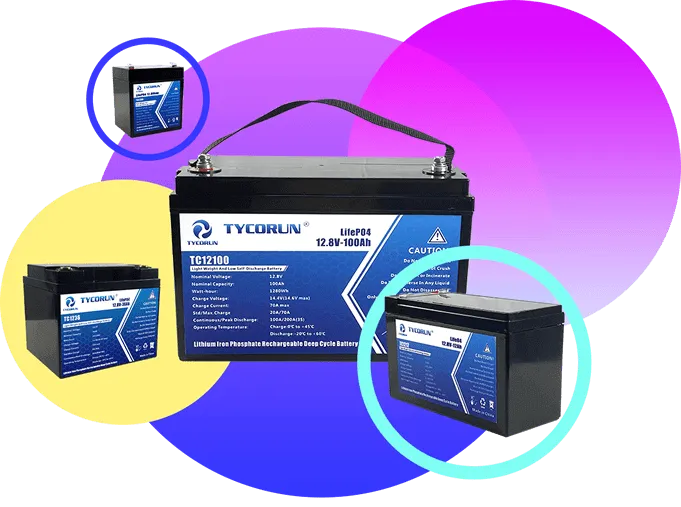
About lithium ion battery manufacturers
TYCORUN® has more than 14 years of experience in the lithium battery industry and is a Chinese high-tech enterprise that develops, produces and sells various new energy battery products.
12V lithium ion battery production capacity accounts for 80% of our lithium battery manufacturing products for 12v battery charger.
High quality assurance
TYCORUN is determined to become a leader in the lithium battery industry, quality is our culture!
Professional manufacturers
With lithium ion battery pack as the core, integrating channels and technologies
Factory wholesale price
We promise to let customers get the most cost-effective lithium battery products
Reliable Service Assurance
Provide lithium ion battery OEM, ODM, 1 MOQ.Full Set of Certificate
Video Gallery
Lithium ion Battery News

One-stop Africa battery swap solution – new energy electric motorcycle intelligent operation management
This article will cover the current situation of Africa’s market, the rapid development of the Africa battery swap industrial chain and Tycorun’s battery swap solution.

Top 6 high-rate cell companies in China
Among the manufacturer producing high rate battery, BAK, EVE, LISHEN, MOLICEL, SAMSUNG SDI, and SunPower stand out for their outstanding products.

Top 10 solid state battery manufacturers in China
China’s solid state battery development is in the accelerated stage, the top 10 solid state battery manufacturers mainly have the following

New Ganfeng battery – ultra safe semi-solid battery with high performance
This article details Ganfeng Lithium’s solid-state battery development, technological innovations, and the performance of the ganfeng battery in safety tests.
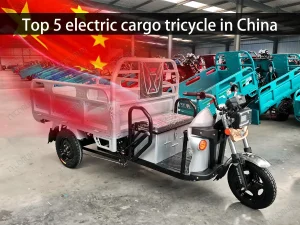
Top 5 electric cargo tricycle in China
This review presents the top 5 electric cargo tricycles in China, featuring detailed specifications and performance insights. Evaluating criteria such as load capacity, battery efficiency, and safety features, this guide assists buyers in selecting the ideal tricycle based on individual requirements.
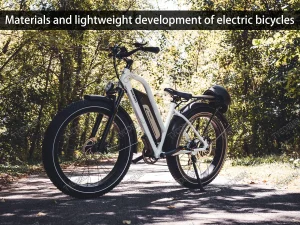
Materials and lightweight development of electric bicycles
This article provides an insightful exploration into the development of electric bicycles, focusing on advancements in materials and lightweighting techniques. It delves into the historical evolution of electric bicycles, analyzes various bicycle frame materials, discusses the development of electric power assist technology, and offers an overview of the electric assist bicycle market. Through detailed examination and analysis, it highlights the importance of lightweighting for electric bicycles and identifies key trends shaping the industry’s future.

